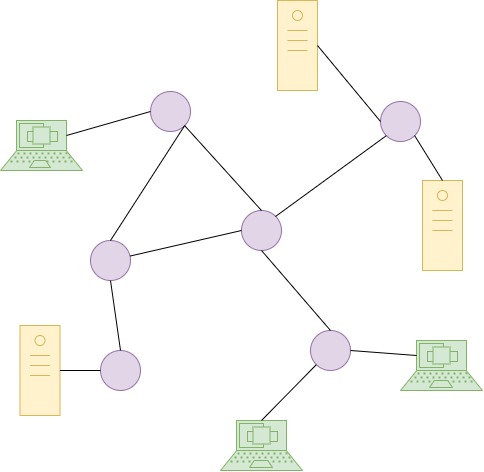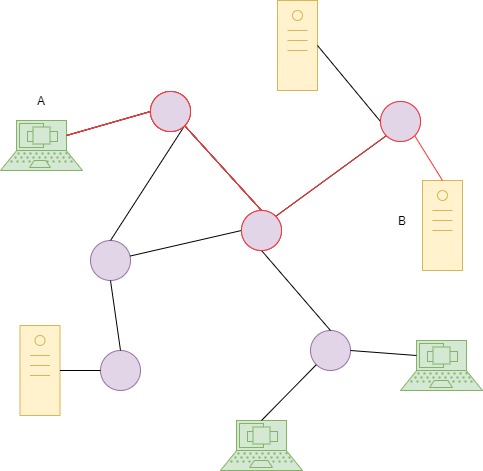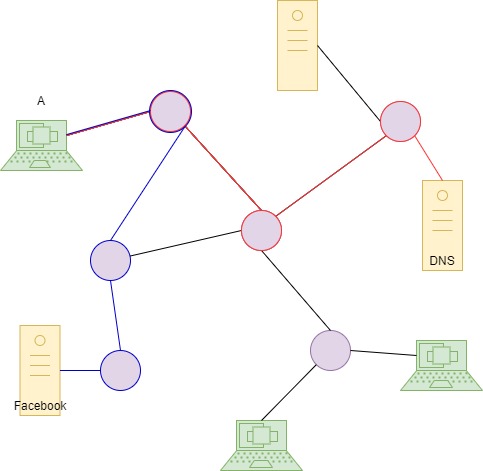The internet, we use it everyday but many people don’t know how it works or what it is made of. This article is intended for people with no knowledge of informatics and that would like to understand the basics of the internet. Thus, I will try to explain to you these concepts as simply as I can.
What is the internet made of?
The internet is a network of computing units such as user devices, routers, and servers. Servers provide services such as web access, multiplayer games, mail, cloud services, … These services can be accessed through the internet by user devices such as phones, computers and gaming consoles. Finally, routers are used to connect user devices and servers so they can communicate.

Servers are really just big computers and their job is to serve. Every time you send an email, browse the web or play games with friends, you are communicating with a server. Servers can get quite complicated but have three basics functions : send, receive and store. For example, a server can send you web pages, receive the form you filled when buying something online and store your Facebook photos.
Routers are the backbone of the internet, they are tasked to link users and servers such that they can communicate. Communication is achieved by sending packets, each contains a message, and at least a destination and return address. Using this information, routers are capable of directing packets to other routers and finally to their destination.


Routers come in many forms. From those in your home to those in data centers.
How does it work?
Packets are sent between the user and servers. Each packet contains a request or a response. If you ask a server for a web page you send a packet with that request to the server. Then, the server responds with another packet containing the web page requested. In a sense the internet is analogous to the postal service. Except that the mail man is a bunch of cables and routers.
To direct packets, routers need to know where to send it. IP Addresses are used to localise elements in the network. They work similarly to a postal service where your address might be : BELGIUM 1000 BRUXELLES Rue du Chêne 1. IP Addresses look like this : 10.25.35.53 Similarly, from left to right, we have wide and then precise information about where something is in the network. In this fictitious example, 10 indicate Europe, 25 is for Belgium, 35 is for Bruxelles, etc.
Routers learn where things are by discovering their environment. Their only job is to receive packets, look at the address of the destination and then send each to the next router or to the final destination. This ultimately forms a path between two communicating elements in the network (A and B on the diagram below).

As a user, when you want to communicate with a server, you can send a packet with the server address to any router in the network. The packet will be forwarded to the server and similarly you will receive a response from the server.
In practice you often do not know the address of servers. This is because they tend to change and there are a lot of them. The solution is DNS; DNS servers know the address of other servers and rarely change their addresses. Thus, you just have to know the address of a DNS to get access to the address of many servers. Thus, they are functionally similar to phone books.
Therefore, when you type “www.facebook.com” in your browser, your computer or phone contacts a DNS server and asks it what is the address for “www.facebook.com”. The DNS then gives you the IP address of facebook which you can use to contact their server to get access to their website.

Conclusion
In this article I presented you the basics elements of the internet but it does get much more complicated indeed. There are a lot of challenges like error handling and packets traffic congestion. Moreover there are many more elements in the network such as switches, hubs, bridges, …
The internet is a complex interconnected network of complex elements and it is amazing that all just works — most of the time.
- How RLHF works for LLMs : A Deep Dive - 1 July 2025
- Attention Mechanism in LLM Explained : A Deep Dive - 27 May 2025
- Tokenization in LLMs: Why Not Use Words? - 6 March 2025